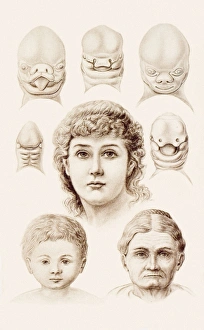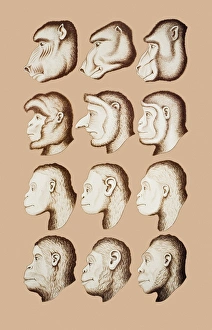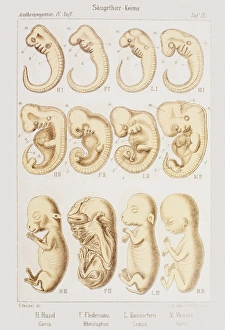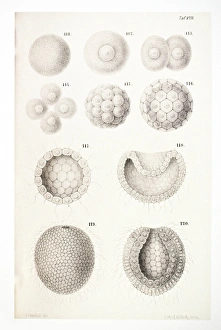Ernst Haeckel Collection (page 5)
Ernst Haeckel, a renowned German biologist and artist, left an indelible mark on the scientific world with his mesmerizing illustrations
All Professionally Made to Order for Quick Shipping
Ernst Haeckel, a renowned German biologist and artist, left an indelible mark on the scientific world with his mesmerizing illustrations. In 1899, he created "Aspidonia, " a historical artwork that showcased the intricate beauty of various organisms. One such illustration depicted the enchanting hummingbirds from the Trochilidae family, capturing their vibrant colors and delicate features. Haeckel's artistic prowess extended beyond avian wonders; he also delved into botanical realms. His illustration of liverworts (Hepaticae) showcased their unique structures and highlighted their importance in ecological systems. Additionally, Haeckel explored Basidiomycota: filamentous fungi through his artistry, shedding light on these fascinating organisms' role in decomposition and nutrient cycling. The artist's fascination with marine life led him to create captivating illustrations of Acanthophracta radiolarians—microscopic creatures that inhabit our oceans. These intricate drawings revealed the astonishing diversity found within this group. In 1874, Haeckel unveiled an awe-inspiring artwork featuring four apes—an homage to our evolutionary heritage. This piece not only celebrated our shared ancestry but also challenged societal perceptions about human uniqueness. Continuing his exploration of nature's wonders, Haeckel turned his attention to stinkhorn mushrooms (Basimycetes). Through detailed illustrations, he captured both their repulsive yet intriguing forms—a testament to his ability to find beauty even in unconventional subjects. Among Haeckel's most iconic works are those featured in "Kunstformen der Natur" (Art Forms in Nature). Plate 11 presented Heliodiscus Discoidea—a stunning representation of microscopic marine life that resembled radiant suns floating amidst darkness. Plate 7 showcased Epibulia Siphonophorae—an ethereal depiction of colonial organisms drifting through ocean currents as if dancing underwater ballet.














